
by Abbey Smith | Oct 17, 2025
If you have walked through any retail garden centers lately, you probably have seen some bright colored fall flowers. These pretty plants are what we call mums, or chrysanthemums. Mum flowers are a fall staple in the south to see on a front porch or any fall decorated scape. They pair great with an heirloom pumpkin or some ornamental kale. Growing up in Kentucky, mums are everywhere you turn this time of year. But how can you make the most of your mums this fall? Follow along for great tips to keep your mums fresh for the next several weeks.

Mum Fall Design. Photo Credit: Danielle Allen, Glory Goods- Irvington, KY
When shopping for the perfect mum for your porch, it is best to try and select a pot that has not fully bloomed yet. Chrysanthemums come in a variety of colors and some varieties even bloom more than one color (I love Candy Corn Mums!), but it is crucial to choose a plant that is not showing any color at all yet. The more blooms, the less life span you will get. Many wholesale mum growers will “de-head” the blooms or remove the buds appearing closest to opening when they are closer to market time to keep the inventory prettier for the consumer. It’s also important to select plants that look healthier. Mums bloom in a mounding fashion, so having uneven bloom patterns or discoloration is not a good sign. It’s also good practice to remove blooms as they begin to die off to make room for new ones.

Glory Goods Mum Wholesale Growing Pad. Photo Credit: Danielle Allen, Glory Goods- Irvington, KY
In the last several weeks in Jackson County there has been little to no rain fall. It’s important during dry spells like these to keep your mums saturated but not sopping wet. Mum flowers love to be watered from the bottom. To do this, set the pot in a bucket of water no longer than 15 minutes at a time to allow the soil to hydrate thoroughly. Watering your mum from the top can increase chances of bacteria and fungus growing on your blooms and can cause uneven blooming patterns. Mums need full sun to grow, so monitoring their dryness is important so your plants don’t dry out completely.
Okay, so Halloween is over, you hear the turkey gobbling, and Santa’s sleigh is on the horizon; this doesn’t mean throw out your mums! You can easily keep your mums in containers until December, but there is a risk of frost. When the temps drop below 40 degrees Fahrenheit at night, covering mums with old towels or sheets and removing them in the morning is best practice to keep your blooms frost-safe. You can also plant your mums in the ground. If you chose to do this, it is best to amend with compost as most mums are not acclimated to sandy soil.
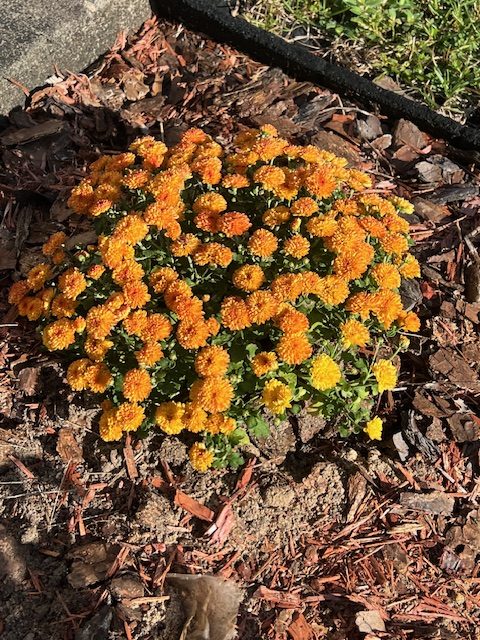
Mum in the Ground. Photo Credit: Abbey Smith, UF/IFAS Extension
For more information, please visit:
https://gardeningsolutions.ifas.ufl.edu/plants/ornamentals/chrysanthemums/
https://nwdistrict.ifas.ufl.edu/hort/2024/10/17/mums-the-word-on-fall-color/
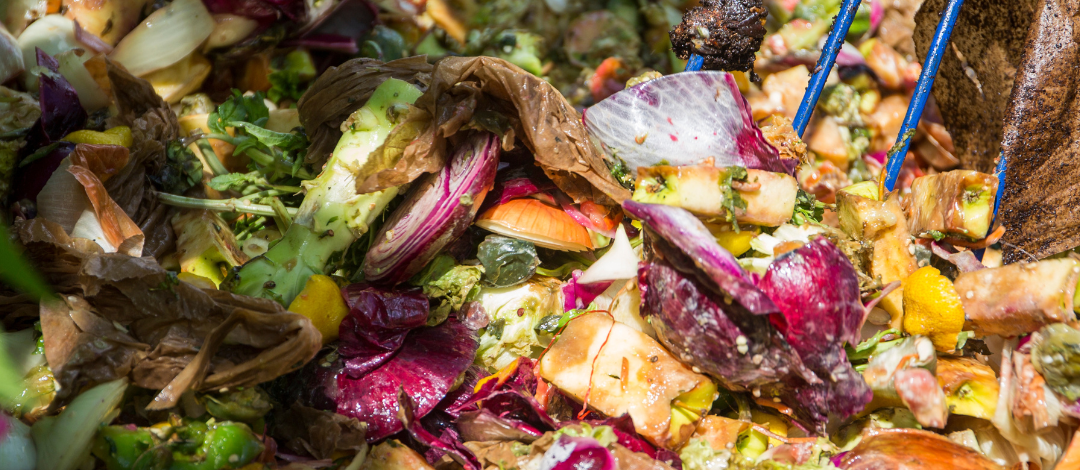
by Abbey Smith | Sep 4, 2025
As we transition from the dog days of summer into (hopefully) the cool weather of fall, it is a great time to consider the nutrient levels of your garden soil. One of the best things you can give your garden is the foundation of healthy soil, but to do that you may have to add some things over time. A natural way to boost your garden’s nutrient levels is through composting. But what exactly is compost and where can you get it?
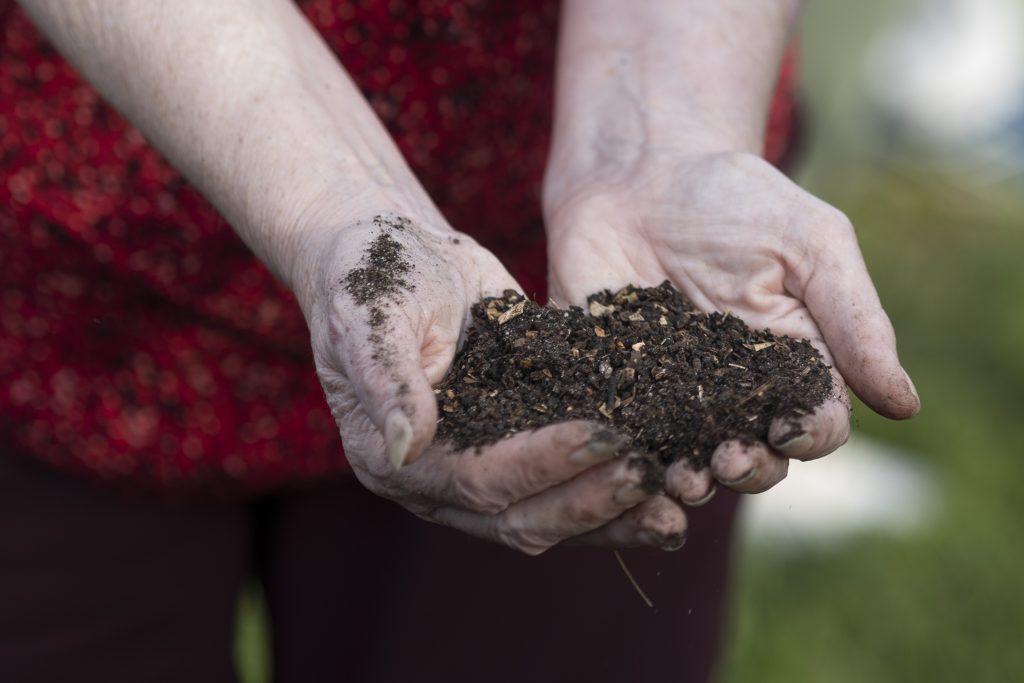
Handful of finished compost soil. Photo Credit: UF/IFAS Tyler Jones
Compost is often referred to as “black gold” by gardeners because of its nutrient dense consistency. And even better, you can make your own compost from home. Compost is the makeup of an even ratio of carbon and nitrogen by-products that naturally decompose over time to create a brown-soil like substance. Carbon products are often referred to as “browns” and nitrogen products “greens.” Examples of browns are straw, cardboard, and old leaves. Green materials are often food scraps, lawn clippings, and animal manures. Compost can be added and tilled into your garden or depending on the type of compost, it can also be used as a potting soil alternative.
It is easy to create a compost bin at home. It does not have to be fancy or expensive to create. Some people opt for a pre-made compost tumbler bin to make turning their pile easier, while others use old wood pallets for their siding. You can even create a vermicompost bin inside a storage tote and use worms to do the composting for you. There are many possibilities. But it is important to note that bins do create a slight odor, because they are breaking down waste products. Location of your bin should be kept in mind if you don’t want close neighbors or even family members making complaints about the smell. However, if there is a strong odor overtaking, it could indicate an issue with the bin and will need to be addressed. Keeping a 1:25 ratio of greens to browns will keep odors at a minimum.
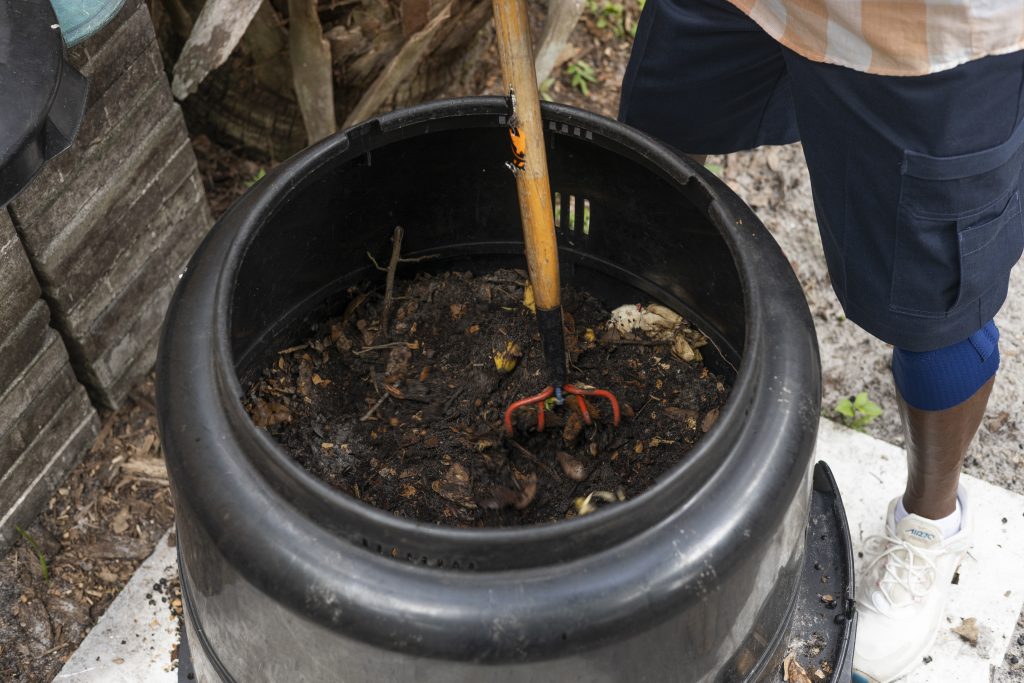
A compost bin being stirred. Photo Credit: UF/IFAS Cat Wofford
If you are interested in hearing more about compost and getting a hands-on demonstration on how to build a compost bin at home, the Jackson County Master Gardener Volunteers are hosting an informational workshop called Backyard Composting 101 on September 20 at 9:00 am at the Jackson County Extension Office. Admission is $7 per person. Space is limited for this class, so be sure to call 850-482-9620 to pre-register today.
For more information, please visit:
https://gardeningsolutions.ifas.ufl.edu/care/fertilizer/compost/
https://sfyl.ifas.ufl.edu/sarasota/natural-resources/waste-reduction/composting/what-is-composting/methods/
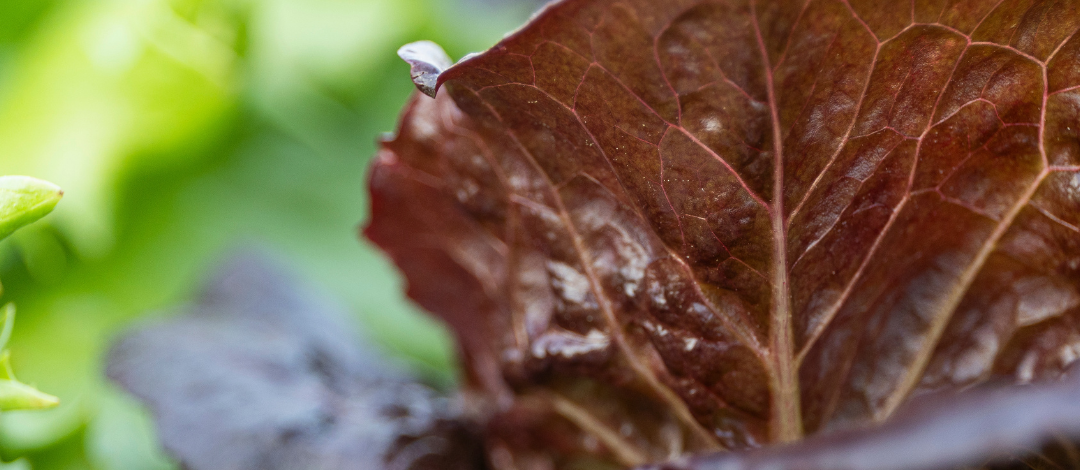
by Abbey Smith | Jul 27, 2025
It may still be scorching hot outside, but it’s not too early to be thinking ahead of what to plant in your fall garden this upcoming season. There’s much to do to prepare, so knowing the right steps to get ahead will save you time. There are many options for fall and winter vegetables to grow in the Florida Panhandle and picking what is best for you or your family is essential.
The first step when planning a fall garden is to clean all debris from your previous plantings to prevent disease. The next would be to take a soil test. It’s essential to know the nutrients existing in the soil to have a successful growing season and thriving plants. You can contact your local extension office about soil testing availability in your area. Once you know the nutrient levels of your soil in your garden, you can make applicable amendments, such as adding compost. Some people opt to grow a cover crop in between growing seasons. For more information on cover crops in the garden, check out this article: Cover Crops in the Garden
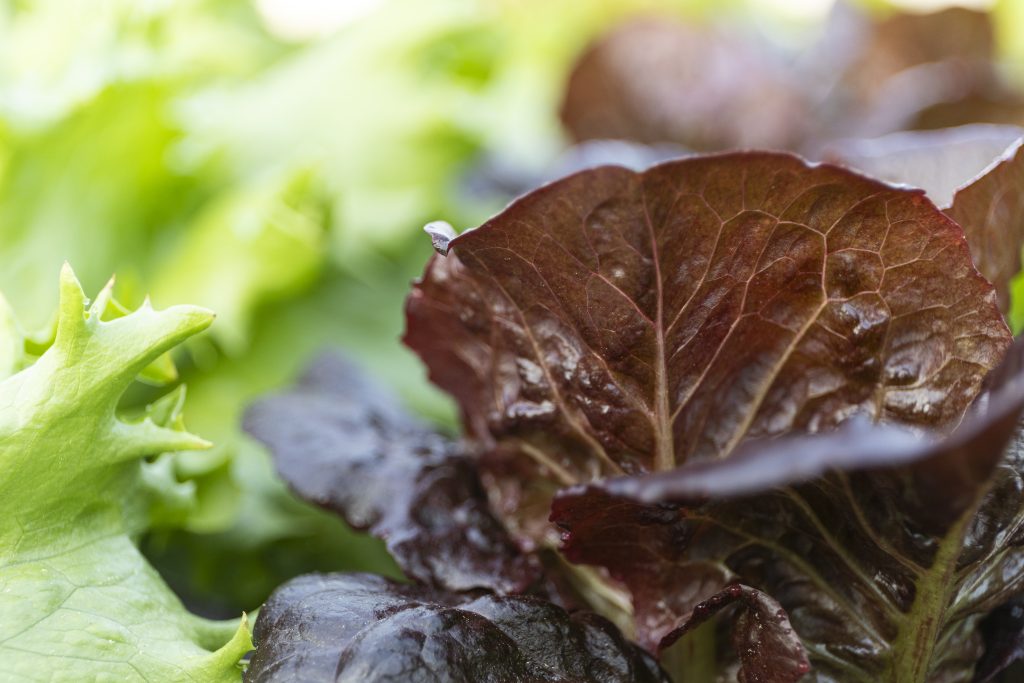
Lettuce leaf. Photo Credit UF/IFAS Cat Wofford
It’s important to know what vegetables grow best at specific times of the year. Most vegetable plants grown in the fall are considered “hardy” or semi-hardy.” A plant’s hardiness determines their level of cold tolerance. While it stays relatively warm in the fall here in North Florida, it is important to understand the lowest temperature a vegetable plant can withstand. You should also know your USDA Hardiness Zone. As of 2023, the Florida Panhandle is considered 9A under the USDA Hardiness Zone map.
Many fall vegetables can be sewn directly into the ground. Some examples of fall vegetables are leafy greens like lettuce, kale, and swiss chard. There are other vegetables in the brassica family that thrive in the fall like broccoli, cauliflower, and brussels sprouts. To get more ideas of what to plant when, refer to the Florida Panhandle Planting Guide
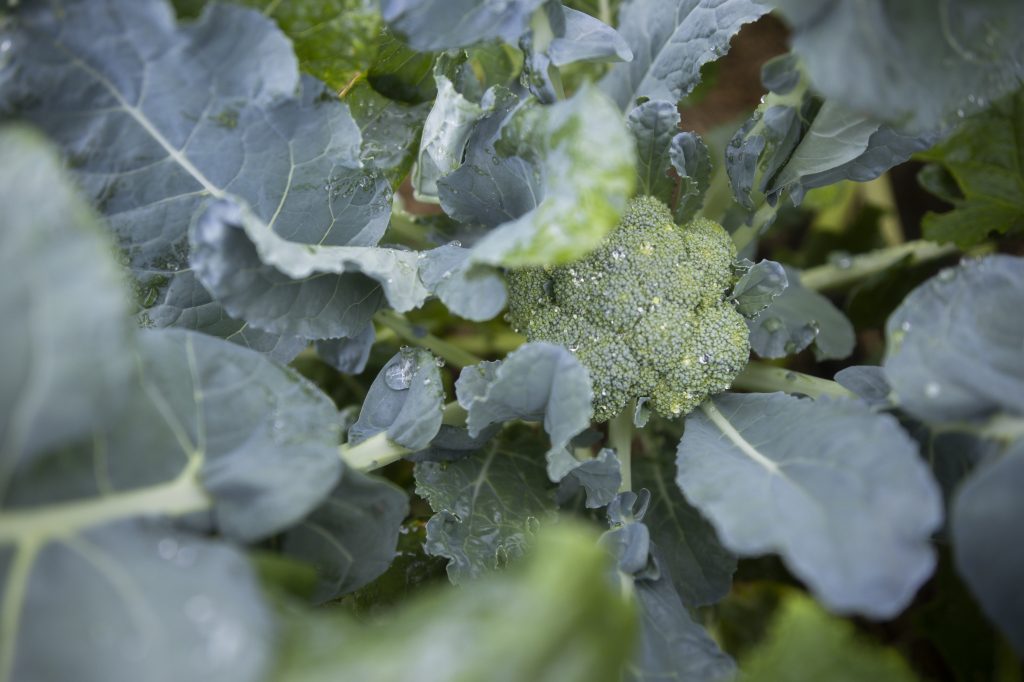
Broccoli on the plant. Photo Credit: Tyler Jones, UF/IFAS
If you would like to learn more about fall gardening and how to prepare the vegetables you grow, the UF/IFAS Jackson County Extension office will be hosting a Garden to Table Workshop on August 28 from 6:00 pm to 8:00 pm. For more information on how to register visit: https://JacksonCountyFCS.eventbrite.com
by Abbey Smith | Jun 5, 2025
The Florida Panhandle’s warm, humid, and sunny climate makes it ideal for lawns to stay lush and green for most of the year—but it’s also perfect for turfgrass diseases to develop. The summer weather has already been ramping up with temperatures reaching a little above 90 degrees Fahrenheit already this year which also means the signs of disease will be showing sooner rather than later. If you’ve been noticing large brown patches, thinning grass, or strange spots growing on you grass leaves, a disease may already be present. Here’s what you need to know to stay ahead of a total lawn takeover.
Large patch or rhizoctonia blight is one of the most common fungal turfgrass diseases to affect lawns, specifically if you have centipede turfgrass. This disease is most prevalent between the months of November and May, and if not controlled, will continue to spread in the fall. Symptoms are easy to spot, as large, brown circular discolorations that will grow larger in size over time. The best way to treat large patch is through preventative lawn maintenance over time. Water only when necessary to avoid excess moisture, apply slow-release appropriate lawn fertilizers, and clean your mower blades after each time you mow.

Large patch disease present in turfgrass. Photo Credit: Shelia Dunning, UF/IFAS Extension
Another common lawn disease to see during the warmer months is dollar spot. Dollar spot will affect all warm season turfgrasses but will be more commonly found in Bahia and Bermuda grass. Dollar spot disease creates small patches that are circular and will grow into larger areas. Individual grass leaves will have small lesions starting on the leaf margin that will have a light brown to tan coloration. It is important to know that grasses that are drought stressed, over irrigated, or mowed too low are more prone to contracting this disease. Proper cultivation practices are important to prevent dollar spot and other turfgrass diseases. For more sever cases, the use of chlorothalonil fungicide can be used during the treatment process.
There are various other lawn diseases that can be recognized over time. If you are trying to identify a potential disease in your lawn grass, consider using the UF Turfgrass Disease Identification Flowchart. It will walk you through the symptoms that are present to make a correct diagnosis. If you would like a more expert opinion, contact your local county Extension office for additional help. For additional information on turfgrass diseases, please visit:
https://sfyl.ifas.ufl.edu/media/sfylifasufledu/baker/docs/pdf/horticulture/TurfgrassDiseaseIdentificationGuide.pdf
https://gardeningsolutions.ifas.ufl.edu/lawns/problems-and-solutions/large-patch/
https://gardeningsolutions.ifas.ufl.edu/lawns/problems-and-solutions/lawn-diseases/
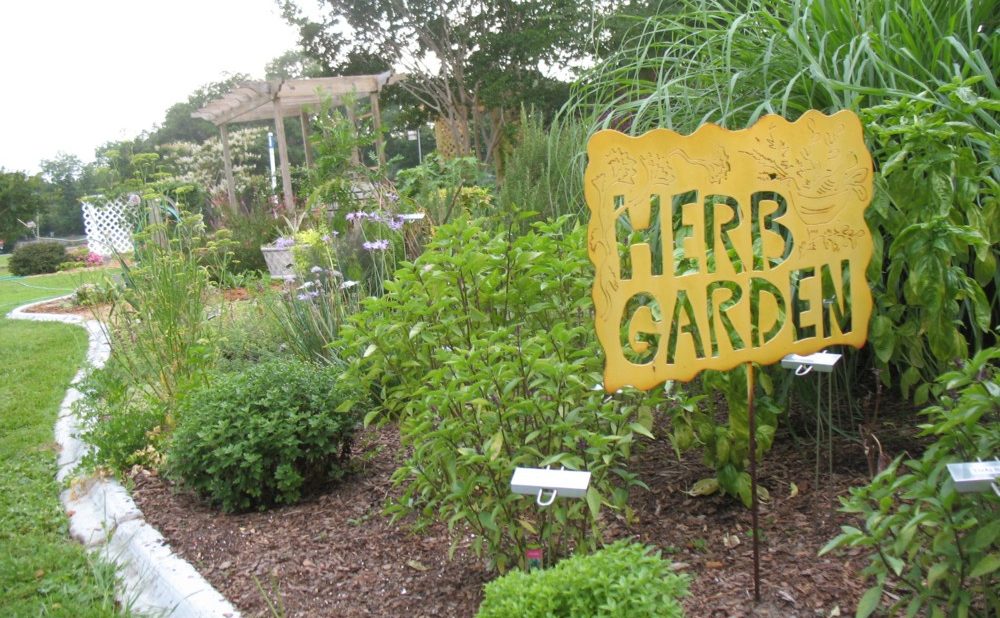
by Abbey Smith | Apr 24, 2025
Herbs are one of the best ways to add diversity to your garden or patio in the summer as they have many uses and unique traits. Summer is the season where herbs truly shine. There are many benefits of growing and using herbs at home, such as adding flavor to foods and beverages. Throughout this article, you will learn about different types of herbs and their uses.
The use of herbs has dated back almost 5,000 years, specifically in what we know today as modern Asia and the Middle East. “The Age of Exploration” enhanced the herb and spice trade in many European countries when Christopher Columbus set sail in 1492 to discover the trade route to India. Three hundred years later in 1715, Spanish explorers were pushed to the east coast of Florida in the area we know today as St. Augustine, Florida. They introduced various herbs and spices such as vanilla, annatto, and sassafras. Herbs have a unique history, and you can read more from the book Herbs and Spices in the Florida Garden written by Charles R. Boning.

Photo Credit: Abbey Smith, UF/IFAS Extension Jackson County
There are many key things to consider when growing herbs at home, such as your growing location. Gardeners need to consider how easily their herbs can be accessed from the garden to the kitchen, the exposure of sunlight, and whether they will be grown in the ground or in containers. Most herbs like ample sunlight and well-drained soil. Herbs can be attractive additions to most flower beds and container pots. They can also be a great pollinator source as most will bloom. However, some herbs can grow quite aggressively and may be better suited for a container in order to control their growth.
There are various ways herbs can be propagated. The most common ways are by stem cuttings or germinating seeds. There are many herbs one can grow, but the best herb varieties acclimated for the summer heat are basil, chives, cilantro, cumin, lemon grass, marjoram, mint, oregano, rosemary, and thyme. Most herbs are used for culinary purposes like adding fresh flavor to a recipe or creating a spice rub for meat. When harvesting herbs to cook with, look for leaves that are younger and tender with good coloration to them. The younger leaves harbor more flavor and are better suited for fresh use.

Container grown herbs. Photo Credit: Abbey Smith, UF/IFAS Jackson County Extension
Some of the most common herbs that gardeners keep on hand are basil, chives, and mint. See below the growing information for each type.
Basil
Basil belongs to the mint family, with many varying types that have a wide selection of scents and flavors. Sweet Italian basil is most used in Italian recipes, like pesto or marinara sauce. Basil is classified as an annual herb but can last for several seasons if it is winterized properly. You can plant basil in the early spring or fall and it prefers morning sun to afternoon shade. It is best to pinch off the flowers to produce more leaves, as the flowers can alter the flavor profile.
Chives
Chives are classified as a perennial herb that will flower between April and May. There are two different types of chives: garlic and onion. Both have obvious different culinary flavors but have the same growing requirements. Chives prefer full sun and a well-drained soil and will go dormant during the winter months. This herb will need to be divided every so many years to prevent overcrowding.
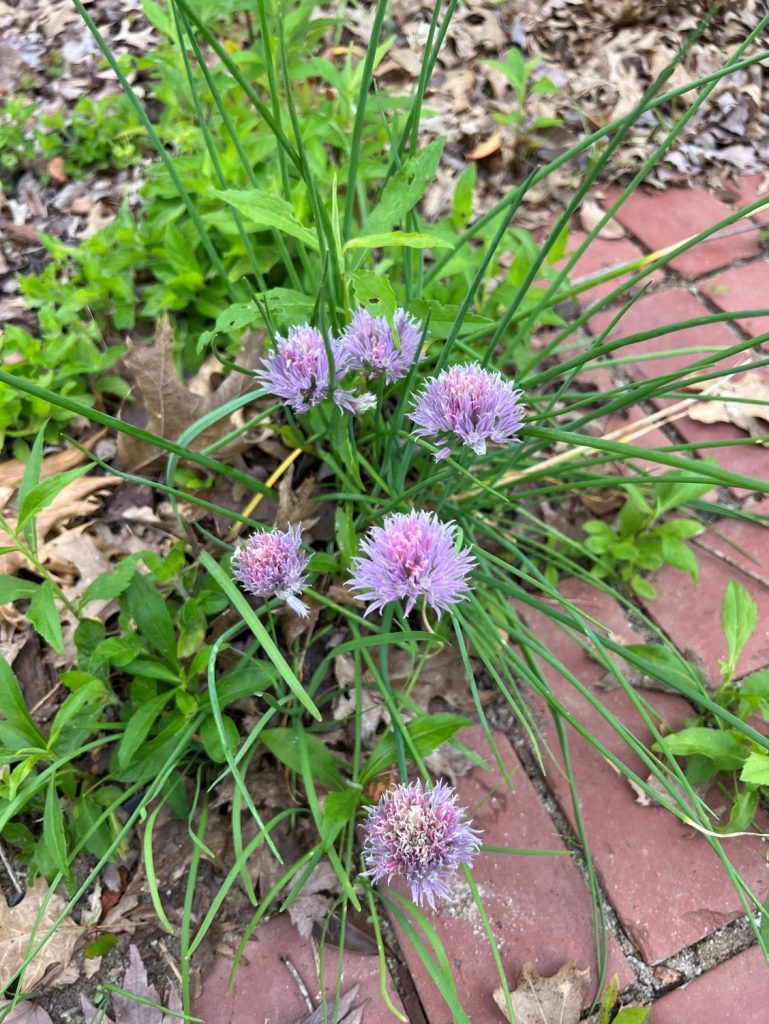
Onion Chives, Photo Credit: Abbey Smith, UF/IFAS Extension Jackson County
Mint
Mint is an easy to grow perennial herb that has hundreds of varieties to choose from. Some commonly recognized ones are Spearmint, Peppermint, and Chocolate Mint. It is commonly used in beverages and foods and is a great natural insect repellent. Mint has dark green levels and can grow in either shade, partial sun, or full sun. It likes plenty of moisture so heavy watering is needed. This is an herb that can quickly become a weed if not properly maintained so growing in a container is best.
To learn more about different herbs and their growing requirements, you can sign up for the UF/IFAS Jackson County Extension Garden to Table Workshop: Summer Herbs on May 9 at the Jackson County Extension Office from 6:00 pm to 8:00 pm. You can register on Eventbrite at: https://www.eventbrite.com/e/garden-to-table-summer-herbs-registration-1111961539899?aff=erelexpmlt
For more information please visit:
https://gardeningsolutions.ifas.ufl.edu/plants/edibles/vegetables/herbs/
https://gardeningsolutions.ifas.ufl.edu/plants/edibles/vegetables/herbs-for-pollinator-gardens/















